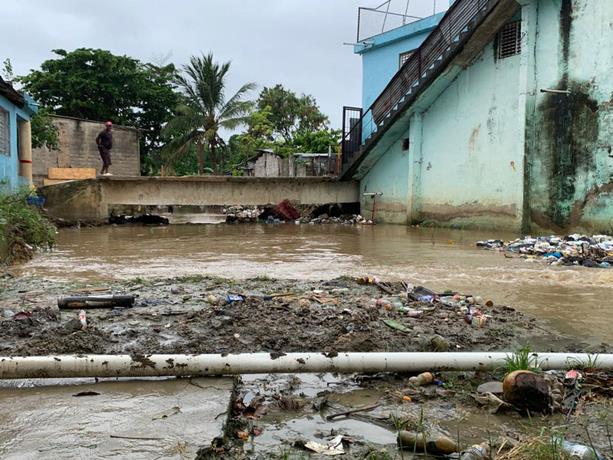Focus: Epidemiological alert! Dengue after Hurricane Fiona

Santo Domingo, DR
Dengue is an infectious disease transmitted by the dengue virus, whose vector is the Aedes aegypti mosquito. There are four types of dengue virus, whose clinical picture can range from flu-like symptoms to complications that can be fatal, as in the case of dengue hemorrhagic fever.
In a brief historical review of dengue, we find that its appearance dates back to the sixth century AD in China and was published in 992, where reference is made to water poisoned by flying insects, which, when biting, caused very high fevers.
When the world widened with the keels of merchant ships, Chinese sailors carried the virus to Africa, where they found a perfect habitat, then migrations made it possible for dengue to spread rapidly, and there are references of dengue epidemics that struck Asia, Africa, and North America (Philadelphia) almost simultaneously in 1781. In a report of the time where the physician Benjamin Rush called this bone-breaking fever because of the symptoms characterized by arthralgias and myalgias.
In the last decades, it has increased considerably; the first epidemic of classic dengue fever in America, confirmed by a laboratory, was in Venezuela in 1963, and the dengue virus serotype three was detected.
It is an endemic infection of tropical and subtropical climate regions; it can also affect temperate climate regions where summers are humid. It is a health problem that affects approximately half of the world’s population; for example, in the case of the Dominican Republic, it is endemic because several epidemiological factors are combined here.
The Aedes aegypti mosquito, the vector of the dengue virus that causes the disease, has a tropical climate with temperatures that do not change much during the year, and a susceptible population, which is activated during the rainy season.
The different public institutions have been very diligent before, during, and after the passage of the natural phenomenon of hurricane Fiona, starting with the first president of the nation Luis Abinader, who took the lead in the work in the affected areas, suspended his trip to the United Nations Meeting, which is an annual meeting where the Heads of States meet worldwide, very relevant in these crucial hours for humanity due to the war in Ukraine, at a time when the Soviet Premier Vladimir Putin, threatens with the use of nuclear weapons, in addition, the global scenario looks overwhelmed by inflation, food insecurity, energy crisis, and other tensions. Therefore, at the regional level, it is of great interest to the Dominican people to alert the world community of the chaos and danger represented by the situation in Haiti, which today has become a no man’s land, and the empowerment of the UN, OAS and other international actors cannot be postponed.
Also, the national leadership behaved at the height of the circumstances; the business sector has made significant donations, demonstrating the resilience of our institutions and the solidarity of the Dominican people. As a result, there is maturity and full awareness that the country comes first.
The Minister of Public Health, Dr. Daniel Rivera, announced strict medical assistance and prevention measures in the provinces affected by the natural phenomenon. In addition, a press conference reported by the national media urged the population to take epidemiological steps to avoid outbreaks of dengue and other diseases such as leptospirosis, tuberculosis, smallpox, and acute diarrheal diseases (EDA).
To the call of the Minister of Public Health, many institutions have joined, and there is full awareness that, as Winston Churchill said, “Healthy citizens are the greatest treasure that any country can have.” Dr. Dilenny Martinez Lopez, a specialist in infectology, expressed, “That the dengue virus belongs to the Flaviviridae family has a high epidemiological impact in our country, there are four serotypes DENV-1, DENV-2, DENV-3 AND DENV-4 and as they are different strains they can repeat to the same person.
She said that the clinical picture often evolves satisfactorily. Still, some fatal outcomes occur, so the population should be on alert when they have some of the following symptoms or clinical signs, such as nausea, vomiting, dermatological lesions such as rash, eye discomfort, retro ocular pain, myalgia, arthralgia (bone pain).
Dr. Martinez Lopez advised the population to take the necessary precautions, as established by the CDC, to avoid stagnant water in barrels, pools, vases, flower pots, flower pots, and car tires, which serve as a reservoir and breeding ground for mosquitoes. In addition to other measures to take, such as the use of mosquito nets and screens on doors and windows, remember that clothing for day to day is fundamental, and finally, the use of insect repellents registered with the Environmental Protection Agency, as recommended by DEET”.
In the current year, the epidemiological impact of dengue in the Dominican Republic, according to a report in August corresponding to the epidemiological week (28) 2022, 15 deaths due to dengue, most of them in children under 15 years old, the number of contagions were 3,185.
After the passage of a hurricane, human ecology is altered, and communicable infectious diseases increase; in this case, cases of dengue fever increase, so it is of vital importance to pay attention to the recommendations to take preventive measures in the areas affected by Hurricane Fiona, and proceed immediately to a national plan of fumigation, giving priority to the East and Northeast region especially the coastline from the lower Yuna delta extending from Villa Riva to its mouth in the Bay of Samaná.
Sanitary control in these circumstances is paramount because it acts as an epidemiological barrier of containment, avoiding the spread of new cases. Therefore, citizens should collaborate with the implementation of preventive measures.
Thanks to Dr. DIlenny, Elizabeth Martínez, a specialist in internal medicine and infectious diseases, graduated from Hospital General Dr. Eduardo Liceaga de México. She is currently part of the Staff of the Centro Médico Cibao (UTESA) Clínica la Unión Medica del Norte, Santiago.

















